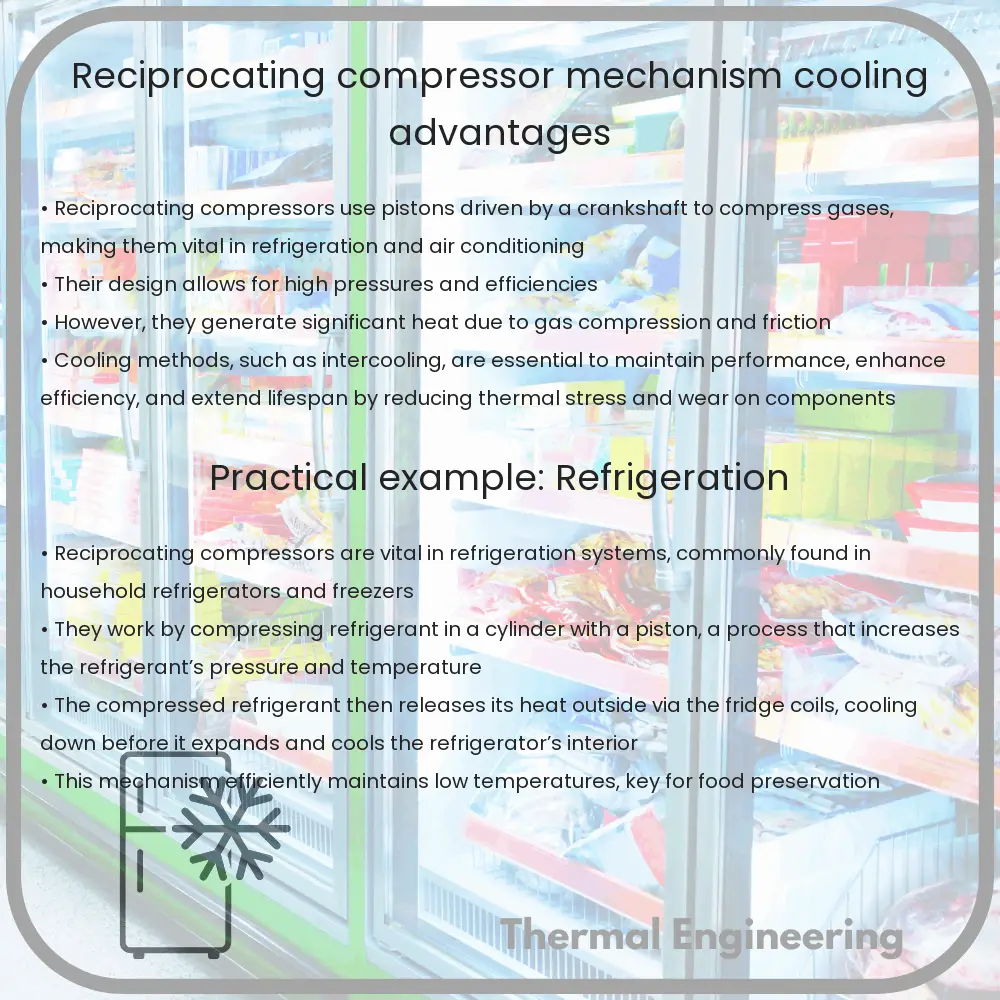Learn how reciprocating compressors work, their mechanism, and the benefits of their cooling systems in industrial applications.

Understanding Reciprocating Compressors: Mechanism and Cooling Advantages
A reciprocating compressor is one of the most commonly used types of compressors in various industrial applications, from refrigeration to pneumatic systems. This article explores the basic operating mechanism of a reciprocating compressor and the advantages of its cooling system.
How a Reciprocating Compressor Works
The reciprocating compressor operates much like an internal combustion engine but in reverse. It includes several key components: the piston, cylinder, crankshaft, connecting rod, and valves.
- Piston: Moves back and forth within the cylinder.
- Cylinder: Houses the piston and the compressed air or gas.
- Crankshaft: Converts the rotational motion into a reciprocating motion that drives the piston.
- Connecting Rod: Connects the piston to the crankshaft, facilitating the transmission of motion.
- Valves: Control the intake of gas into the cylinder and the exit of the compressed gas.
The basic operation of a reciprocating compressor can be summarized in three stages: intake, compression, and exhaust.
- Intake: The inlet valve opens, allowing the gas to fill the cylinder; the piston moves downward, reducing the pressure inside the cylinder.
- Compression: The inlet valve closes, and the piston moves upward, compressing the gas trapped inside the cylinder.
- Exhaust: The compressed gas opens the exhaust valve and is pushed out into the discharge pipe as the piston continues to move up.
The described mechanism results in increasing the pressure of the gas by decreasing its volume, following Boyle’s Law, which states that for a fixed amount of an ideal gas kept at fixed temperature, pressure and volume are inversely proportional.
Cooling Advantages of Reciprocating Compressors
Compression of gas generates heat due to the energy input and friction. Cooling in reciprocating compressors is crucial not only for maintaining efficiency but also for ensuring the safety and longevity of the system. Key cooling advantages include:
- Reduced Risk of Overheating: Effective cooling controls the temperature rise during the compression process, preventing potential damage due to overheating.
- Improved Efficiency: Cooling helps maintain a consistent operational temperature, ensuring that the compressor operates efficiently and the gas properties remain stable.
- Extended Equipment Life: Lower operating temperatures reduce the wear and tear on compressor components, extending the life span of the equipment.
Reciprocating compressors typically employ one of two cooling methods:
- Air Cooling: Utilizes air flow generated by fans or natural convection to lower the temperature of the compressor parts.
- Water Cooling: Involves water jackets around the cylinder or the use of cooling towers, which transfer the compressor heat to water, significantly reducing the temperature.
Choosing the appropriate cooling method depends on various factors such as the specific application, ambient conditions, and performance requirements. In general, water cooling is more effective for larger or more intensive operations, while air cooling may suffice for smaller, less demanding environments.
Understanding the mechanism and the importance of cooling in reciprocating compressors can play a pivotal role in maximizing efficiency and durability in industrial applications. Whether used in refrigeration systems, air conditioning, or industrial pneumatic systems, these compressors are essential for reliable operation and optimal performance.